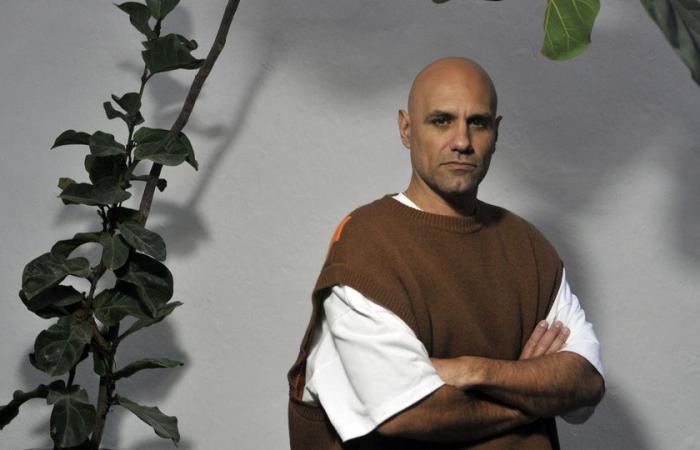
The filmmaker Javier van de Couter and the writer and actress Camila Sosa Villada They were a prestigious pair in Miaoperates the filmmaker, who told the story of a transvestite and reviewed issues such as discrimination, intolerance, marginalization and social exclusion, but also the infinite ability to love the human being. Now, both They adapted the novel Thesis on a domesticationby Sosa Villada And the author is also the protagonist. In the adaptation of literary fiction – whose first version was published in the collection I am Library of Page/12and then reissued by Tusquets – Laura Huberman collaborated. The film premieres This Thursday at 20.50 at Cine Arte Cacodelphia And you can also see the May Friday at 20 in the Malba.
Camila herself plays a trans -occupying woman who knew how to win: she is an actress, she is prestigious, earns money, marries and launches to adopt a child. It has job and personal success, the dream seems complete: family utopia. The protagonist slides by this thesis by building A new transvestite narrative that includes the right to enjoyment, ambition and contradiction.
“We already had experience working: It was the protagonist of my first movie and we had made theater together. We talked about the novel and in that first conversation began to turn the idea of adapting it to the cinema. It was after I read it and that Camila edited her, and it was quite organic because of the experience we had of collaborating artistically previously, “says Couter to this newspaper.” Then we began to adapt the script to do a first test, and Laura Huberman joined us later. And a little too In that talk it was decided that Camila star“Add the director.
-Tu work first, Tighthe approached the life of a transvestite. How do you think both films and their epochs too?
-They discuss precisely in that arc in the legal. when we present Tightportrayed the 1990s, although the film premiered in 2011 and was based on a real event that occurred in 1995. That is, there is a record arch and a legal arch since Tight until Thesis on a domestication Very blunt: in the middle is the gender identity law. When we premiere Tightthe law did not exist yet and we carry the DVD of Tight To deputies to see if, in some way, something of the film moved. And when we did Thesis on a domesticationalthough it still needs a lot of work, the reality of trans people is very different.
-Does the movie see that leap?
-All it also does, yes, no matter how much it seems a bit dystopian, in relation to how the central character or the possibilities that the leading actress has. The role of the actress in the film is very different also to Tight. In Tight We were still behind an empathic, moving look, perhaps compassionate about the transvestite universe, and in Thesis It is the opposite. It is not that empathy is not sought, but that is not the character. He is a powerful character, who also has money, artistic hierarchy and who does not mind being good or looking bad with anyone. It escapes a little of that logic or that narrative that, generally, in literature and in the cinema or in the series, the trans character is located. The one of Thesis He is a trans character that is not looking to survive, who is perhaps occupied more in his artistic rolls, in another type of crisis, in another type of conflict. Of course, it is also in this tension that has to do with domestication and with it, with a free actress who travels the idea of domesticating in a way, at times, uncomfortable, common to anyone, not just trans people. That already runs from that place perhaps ancient, but equally necessary, to always see the dissent in a violated way. So, I think there is an important arch between Tight y Thesis on a domestication.
-What were the limitations and concessions of the literary language passage to cinematographic?
-I didn’t feel many limitations. Simply the challenge of staying only with one point of view: that of the central character and not adding others that were not that of the leading actress. That ordered the present time of that actress in a different way from the novel. For example, he involved taking the past almost entirely. In the novel are the past of several characters, even that of the actress. And in the film we decided not to show a painful past in the first area of the story. That places this character in a safer, more powerful place. Perhaps if we showed narrative through flashbacks or whatever, the past of the characters was detrimental to what we wanted to have that powerful character; Do not violate it either in the past. Remaking that part, which is in the novel, what we were looking for was achieved a bit: a more autonomous, more independent character.
-How did the intensity and overflow of the characters work?
-It is a trans character built by the hands of a transvestite writer, like Camila. Then there was something essentially intense, powerful, dramatic, that came, in some way, of those entrails. It is not very common in literature and cinema that a trans writer writes about a trans character. That taken to the cinema generated certain more intense, more emotional nuances possibilities, because there was a knowledge of all the characters: being also in adaptation and the set as an actress, Camila could delve and deepen those intensities, about those overflows. On the other hand, there is the acting game of this actress who enters and leaves all the time of this kind of dynamic theater-life, perhaps a little when he returns to the town and others, but all the route made by the actress and the other characters allow a certain overflow and some intensity.
-The psychoanalysis does not work the idea of normality/abnormality, it is not topical of psychoanalysis. Is that also their optics when looking at these characters?
-Of course, that’s why I talk a little about the self -perception of the characters. The characters “are” and are also the course they exercise during the story. I think that the character of the character, for example, of the actress or the lawyer, is within a logic, of a feeling, in a way of seeing the world. And that acquires a dynamic for many recognizable as domestic, for others recognizable as different, for others recognizable as normal, but there is something that has to do with feeling and how they see life, they see that family. And desire, a little, too; The desire to create certain systems – like family systems – either as contexts, either as a containment. And, at times, that inevitable prison that they also feel within that same system that they have created. Go more there.





